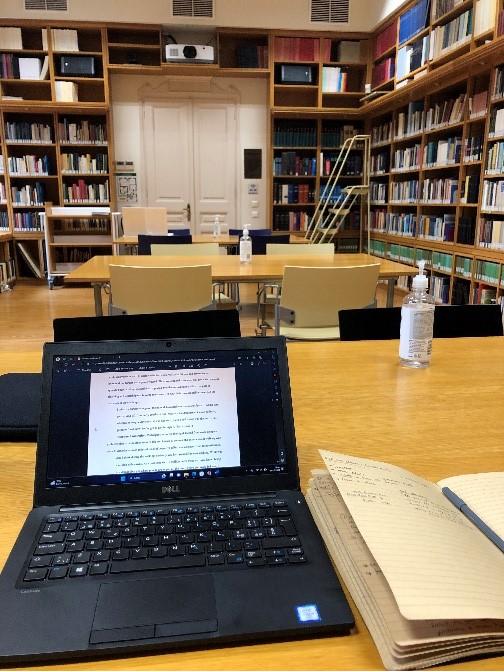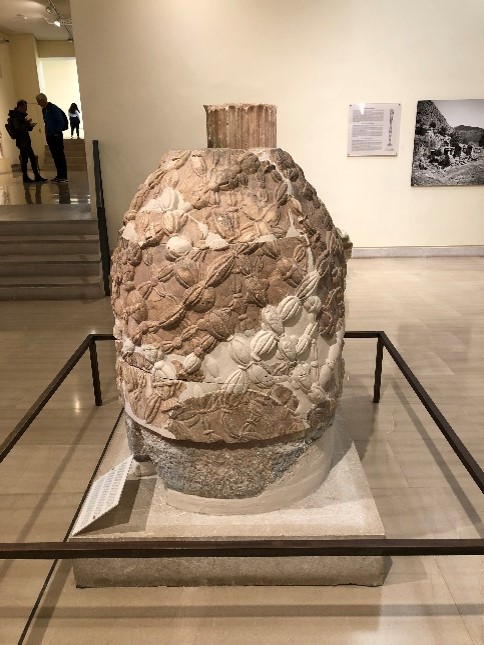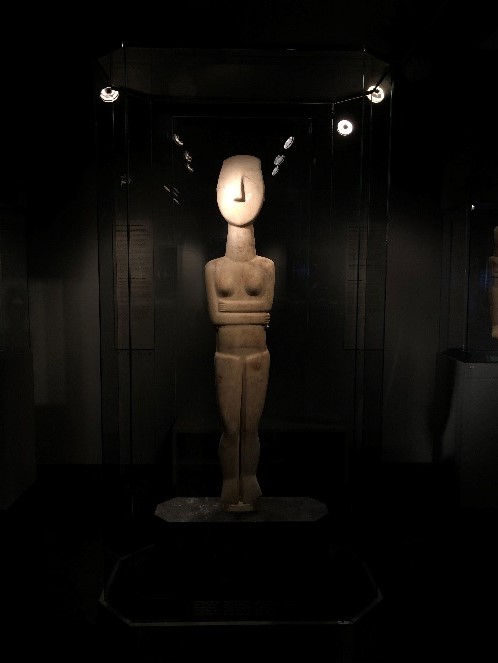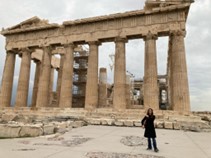By Daiana Veronesi, rMA student in Ancient History at Leiden University
The reason I came to the NIA was to develop my rMA Thesis about ritual theory as applied to ancient Greek case-studies. For me, to come here and develop my research in locus constituted an unprecedent and privileged opportunity, as I could orientate my theoretical research into a more practical direction-which is exactly what I needed to do in order to gain a better appreciation of the argumentations I was defending in my thesis: to look at ancient Greek rituals through a cognitive but also a sensorial, phenomenological perspective. To stay here in Athens for a month would have practically meant to have open access to many libraries and sources (which I could not have accessed otherwise) and to study the ancient material in person by visiting archaeological sites. At the end of this experience I have to say that not only did I manage to do everything I planned to, but also made very good friends and really enjoyed living in this beautiful, always eventful-city.

My plan was to study and get sources during the weekdays, and organize trips outisde Athens in the weekends. As I have been in Athens before but I have never seen its city centre or its surroundings, this plan perfectly suited my research needs and my personal interests too. That is why the very next day after my arrival at the NIA, I started exploring around, wandering around the Plaka and Monastiraki square. In the same day, I have started organizing my stay in more detail, looking at the museums and archaeological sites’ opening times and getting information on how to access other libraries at the academic institutes in Athens. After having met people from different institutes, on the first Sunday of my first week I managed to go on a trip and visit Delphi. That Sunday has been truly wonderful: after having had the chance to look at the mountainous Greek landscape, I could finally see one of the most famous sites in Greece and of the Ancient World. After having visited the museum (and managed to finally see the Omphalos!) I was really struck by the location of the ancient oracolar site: it was (and I felt like I was) really on top of everything. After wandering around the ancient site and getting notes for my thesis’ chapter on oracles, I could enjoy a very nice Moussaka in the small pictoresque village of Delphi.

The weeks went by very quickly, through studying and researching in the different institutes. From the second week onwards I managed to get access to the main libraries I needed to visit: the American library (Blegen), The Nordic Library and the SAIA. However, to get some balance in my daily research, in my second week I have also managed to visit the Acropolis and its museum. I had visited the Acropolis already back in middle school, but I could not recall its vast architectural programme and the effect that it had on me. To visit the Acropolis in a good, detailed way was vital for my research, as I have dedicated a chapter in my thesis about the interaction between the senses and cognition during the Great Panathenaia. Although the premise of my research (and that of many scholarly works on this topic too) is that we will never be able to perfectly reconstruct any original sensory experience from the ancient past, to look at the sites with my own eyes surely added a different perspective to my work: it enbaled me to better contextualize spaces and it definitivively enriched my personal experience with irreplaceable memories. Within the same week I have also decided to go and visit the Museum of Cycladic art: Nynke, a student doing an internship there who was also staying at the NIA, gave me a private tour of the artifacts displayed. I really enjoyed this visit and learning about the Cycladic (female?) enigmatic figurines that occupy much of the museum’s first floor.

Aside from studying and researching, in my last two weeks in Athens I managed to go on other three very interesting trips: the first one to the archaeological site of Ramnous, the second one to the temple of Poseidon at Cape Sounion and the third one to Eleusis. All of them added something special to my research and to my writing, not only in terms of contents, but also in terms of motivation. After a day spent among ancient ruins, I could feel myself very enthusiastic to go back to my thesis and spend a day reading literature which was talking about what I had just seen the day before. Of special interest for me was the archaeological site of Eleusis, as its ancient mysteric initiation also figures in my thesis. To get there was fairly easy, as I could use public transport.
I am extremely grateful for the opportunity the NIA gave me by staying in Athens for a month. My thesis certainly greatly benefited from the many travels and my readings, and my personal engagement with the Ancient World has been even more renewed. I will surely look back at this experience with a little bit of nostalgia, but also with great joy: all the members of the staff had helped me during my stay by making me feel welcomed and always at ease, and all the other students at the NIA contributed to shape my experience both in a professional and in a social way. Now that I have finished the three main chapters of my thesis, I can relax and say goodbye to Athens by taking a final walk around the beautiful Acropolis.
